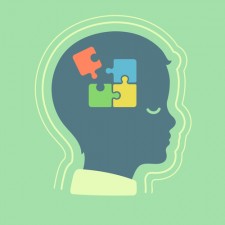Those with autism spectrum disorder (ASD) see the world differently when it comes to processing the wide range of faces, places and social situations they encounter every day. At the same time, non-sufferers have a hard time understanding those who are afflicted, especially when it comes to socializing and communicating.
Understanding the exact relationship between perception and behavior remains the most difficult problem for researchers to understand. This is partly the impetus behind a recent study which sought to learn how the world is interpreted by an ASD sufferer.
ASD is a baffling disorder due to its multitude of impairments, which affects a range of people from highly functioning ASD individuals to those who suffer an array of symptoms. "The study is probably most useful for informing diagnosis," said Ralph Adolphs, the leader of the study. "Autism is many things. Our study is one initial step in trying to discover what kinds of different autisms there actually are."
Adolphs, the Bren Professor of Psychology and Neuroscience, and professor of biology, teamed up with Qi Zhao, an assistant professor of electrical and computer engineering at the National University of Singapore, to develop a method for examining the ASD subjects. The researchers used functional magnetic resonance imaging (fMRI) scans to record the brain activity of the 39 subjects while viewing 700 images.
The first group consisted of 20 high-functioning ASD subjects. The second (control) group was comprised of 19 subjects defined as neurotypical, indicative of them not presenting with ASD symptoms. Both groups were matched for age, race, gender, educational level, and IQ, to avoid any potential confounding variables that would affect the results.
The subjects viewed images for three seconds before moving onto the next image. During this viewing period, their visual spectrum's were being monitored by the fMRI scans to obtain information on the items the subjects centered upon.
Previous studies consisted of researchers using abstract images of objects, or faces. However, for this particular study they decided to present 5,000 everyday objects such as, trees, furniture and kitchen utensils. The goal, according to the researchers, was to show the images in a rich semantic context, to add meaning to what the participants were viewing and allow them to get better acquainted with objects that surround them in their lives. Preceding studies have also shown that individuals with ASD are less drawn to faces than individuals who do not have ASD.
This study found that subjects were strongly attracted to the center of the images, while ignoring the full content that was presented. Subjects focused on what stood out to them, such as differences in colors or the juxtaposition of an object against a colorful background, as opposed to regular faces.
For example, one image showed two people talking, with one facing the camera and the other facing away, in which only the back of the head was visible. The control group concentrated on the face that was visible; the ASD subjects focused equally on the visible face and the back of the person s head.



